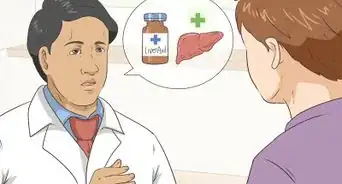This article was medically reviewed by Luba Lee, FNP-BC, MS. Luba Lee, FNP-BC is a Board-Certified Family Nurse Practitioner (FNP) and educator in Tennessee with over a decade of clinical experience. Luba has certifications in Pediatric Advanced Life Support (PALS), Emergency Medicine, Advanced Cardiac Life Support (ACLS), Team Building, and Critical Care Nursing. She received her Master of Science in Nursing (MSN) from the University of Tennessee in 2006.
There are 22 references cited in this article, which can be found at the bottom of the page.
wikiHow marks an article as reader-approved once it receives enough positive feedback. In this case, 92% of readers who voted found the article helpful, earning it our reader-approved status.
This article has been viewed 199,741 times.
Donating blood is a small sacrifice that can make a big difference. Fortunately, the process is an easy one, and only requires you to make a few simple preparations. First, contact your local health clinic or blood drive program to find out whether you’re an eligible donor. On the day of the donation, bring 2 valid forms of photo ID, wear short-sleeved or loose-fitting clothing, and make sure you’re properly fed and hydrated. Following a short review of your medical information, you’ll get a little poke and be sent on your way with the satisfaction of knowing you’ve helped save a life.
Steps
Getting Ready to Give Blood
-
1Determine whether you’re an eligible donor. To give blood, you must be at least 17 years of age and a healthy weight, usually 110 pounds (50 kg) or heavier. In some places, you can donate blood as young as 16, provided you can show proof of parental consent. Call your local blood center ask about what they look for in a donor.[1]
- A few factors that may disqualify you from donating blood include having a cold or the flu, pregnancy, sexually transmitted diseases, and organ transplants.[2]
- Certain medications, like antidepressants, hormonal birth control, and pain relievers like aspirin can also affect the properties of blood, which may make you ineligible to donate if you’ve taken them recently.[3]
-
2Find a local blood bank or blood drive. If you’re in the U.S., your best bet is to visit a regional chapter of the American Red Cross, an organization which collects almost half of all blood donations in the U.S. Some other reputable organizations seeking donations include America's Blood Centers, a network of community-based, independent blood programs across North America, United Blood Services, a non-profit center that serves 18 states, and the Armed Service Blood Program, a military-sponsored program with 20 locations around the world.[4] [5]
- Log onto the website of the American Red Cross and use their Blood Drive Locator to find out where you can go to give blood in your area.[6]
- If there’s not a chapter of the Red Cross or a similar organization nearby, look into mobile donation centers. These are basically traveling blood drives that move from place to make giving blood more convenient for people in out-of-the-way places.
Advertisement -
3Drink plenty of water. It’s important that you be nice and hydrated when giving blood, as water is essential for healthy blood chemistry and circulation. Try to drink at least 16 fluid ounces (470 mL) of fluids prior to donating.[7] Water, juice, or decaffeinated tea is best.
- Loading up on fluids will also prevent you from feeling lightheaded while your blood is being drawn.
- Avoid alcohol and caffeinated beverages like coffee or soft drinks—these can actually dehydrate you if you consume too many of them.
-
4Eat a well-balanced meal a few hours before giving blood. Make sure you put something nutritious on your stomach prior to heading to the clinic.[8] All the major food groups should be represented, including fruits, vegetables, complex carbohydrates (such as bread, pasta, or potatoes), fiber, and lean protein.
- Add a little extra iron to your diet in the weeks prior to your donation by increasing your intake of red meat, spinach, beans, fish, and poultry. Your body needs iron to produce red blood cells.[9]
- Since fats can accumulate in your bloodstream and impact the purity of your blood, it’s best to limit them to small quantities. Stay away from greasy foods, like hamburgers and pizza.[10]
-
5Bring your ID. Most clinics require donors to have 2 valid forms of photo identification when checking in. This could be a driver’s license, passport, or military ID, but some clinics may also accept student ID cards or similar forms of identification. You’ll present your ID to the person at the desk when you arrive.[11]
- Don’t forget to bring your official Blood Donor card if you’ve donated in the past. Showing it will allow you to skip a lot of unnecessary paperwork.[12]
-
6Wear loose-fitting clothes and short sleeves. Certain types of clothing can help speed up the donation process. Short sleeves or long sleeves that can be rolled up quickly will make it much easier for the technicians to find a suitable spot on your arm. Loose-fitting items are a plus, since they don’t restrict blood flow.[13]
- If you’re bundled up for cold weather, make sure your outer layer is something you can remove quickly.
- Even if it’s not chilly outside, it’s a good idea to bring a sweatshirt or light jacket. Your body temperature drops slightly when you give blood, which may cause you to feel a little chilly. However, if your arm begins to feel noticeably colder than the arm not giving blood, tell the technician there, as that could be dangerous for you.
Completing the Donation Process
-
1Provide your basic medical information. Upon checking in, you’ll be given a few short forms to fill out. These forms will ask for your relevant medical history, as well as any illnesses, injuries, or unusual conditions you’ve recently experienced. Answer each question as honestly and accurately as possible.[14]
- Be sure to mention any prescription medications you’ve been taking, along with any other health-related details that might be worth looking out for.
- It may be a good idea to write down key parts of your medical history beforehand if there’s anything important you might forget.
-
2Sit for a physical. Next, you’ll undergo a brief examination to confirm that your heart rate, blood pressure, and hemoglobin levels are normal. The technician may also record other physical stats like height, weight, sex, and age. They’ll then prepare you to give blood by positioning your arm and swabbing the injection site.[15]
- A quick checkup is needed to assess your physical condition and ensure that the donated blood is coming from a healthy individual.
- To measure your hemoglobin and iron levels, the technician will prick your fingertip an analyze the blood droplet.
-
3Sit up or lie down. Let your technician know whether you’d prefer to be in an upright or reclined position while having your blood drawn, as well as which arm you want to give from. Once you’re ready to begin, relax and get comfortable. You’ll feel a small poke, then a subtle cool sensation while the machine slowly extracts your blood.[16]
- The donation process itself takes about 8-10 minutes, during which 1 US pint (0.47 L) of blood will be collected.
-
4Keep yourself entertained while the technicians draw your blood. A book, smartphone, or mp3 player can be a welcome distraction while you’re attempting to sit still. If you’ve come unprepared, you could also pass the time by chatting with your technician or going over the day’s to-do list in your head. 8-10 minutes may sound like a long time, but it will be over before you know it.[17]
- Make sure whatever activity you bring isn’t too much of a disturbance. You may be asked to keep your arm perfectly still while your blood is being drawn.
- If the sight of blood makes you squeamish, focus your attention elsewhere around the room.[18]
Recovering from Giving Blood
-
1Rest up for at least 15-20 minutes after you’re done. Most blood drives provide a designated rest area with places for donors to sit until they’ve regained their strength. If you feel dizzy or disoriented over the next 24 hours, lie down and put your feet up, elevated above your heart. The feeling will soon pass.[19]
- Avoid strenuous activities like exercising, playing sports, or mowing the lawn for at least 5 hours after donating.
- Be careful getting around if you’re prone to fainting. Low blood pressure can cause you to become lightheaded. It may be a good idea to use the handrails while walking up and down stairs or have someone drive you around until you're no longer disoriented.[20]
-
2Keep your bandage on to let your arm heal. Leave it in place for the next 5 hours or so. Once the needle puncture stops bleeding, you don't need the bandage anymore. You may experience swelling, inflammation, or bruising over the next 24 hours. Icing the affected area will help reduce the severity of these symptoms.[21]
- If the technician applied a separate compression wrap over the bandage, it’s okay to remove it after 2 hours to give your arm a chance to breathe.
- Wash the bandaged area periodically with soap and warm water to avoid a rash or infection.
-
3Replenish your fluids. Load up on water or other non-caffeinated fluids over the next couple of days to make sure you’re properly hydrated. Water is vital for producing healthy blood. Any fatigue or disorientation you may have experienced should disappear within a few hours.[22]
- It’s normal to feel a little tired after giving blood. This is due to your body’s fluid levels and oxygenated blood levels being lower than you’re used to.
- Don’t drink alcohol for at least 24 hours. Alcohol consumption can thin out your blood, lengthening the time it takes for the needle site to close up, which could make you feel worse and lead to an increased risk of bleeding.[23] Alcohol also causes you to urinate more, so your body loses even more fluid.[24]
-
4Wait at least 8 weeks before donating again. Should you decide to give blood again, it will be necessary to wait 56 days between donations. This is about how long it takes for your blood cells to fully replenish themselves. After this time is up, your blood concentration will be back to normal and you'll be ready to donate again, without posing any unnecessary risks to your health.[25]
- If you're only donating platelets, you can make another donation after 3 days or return to donate whole blood after a week.[26]
- You’ll need to wait longer (at least 112 days) after a double red blood cell donation.[27]
- There's no limit to the number of times you can give blood. In fact, the more you donate, the more of a difference you stand to make.
Expert Q&A
-
QuestionWhat medicines will stop someone from donating blood?
 Luba Lee, FNP-BC, MSLuba Lee, FNP-BC is a Board-Certified Family Nurse Practitioner (FNP) and educator in Tennessee with over a decade of clinical experience. Luba has certifications in Pediatric Advanced Life Support (PALS), Emergency Medicine, Advanced Cardiac Life Support (ACLS), Team Building, and Critical Care Nursing. She received her Master of Science in Nursing (MSN) from the University of Tennessee in 2006.
Luba Lee, FNP-BC, MSLuba Lee, FNP-BC is a Board-Certified Family Nurse Practitioner (FNP) and educator in Tennessee with over a decade of clinical experience. Luba has certifications in Pediatric Advanced Life Support (PALS), Emergency Medicine, Advanced Cardiac Life Support (ACLS), Team Building, and Critical Care Nursing. She received her Master of Science in Nursing (MSN) from the University of Tennessee in 2006.
Board-Certified Family Nurse Practitioner In most cases, medications do not disqualify you from donating blood. However, there are some that would prevent you from being a blood donor. These include but not limited to Accutane, blood thinners, Hep B, HIV medications, some MS and rheumatoid arthritis medications. Check the Red Cross website to review the full donation eligibility guidelines.
In most cases, medications do not disqualify you from donating blood. However, there are some that would prevent you from being a blood donor. These include but not limited to Accutane, blood thinners, Hep B, HIV medications, some MS and rheumatoid arthritis medications. Check the Red Cross website to review the full donation eligibility guidelines. -
QuestionCan I donate blood if I'm sweating at night?
 Luba Lee, FNP-BC, MSLuba Lee, FNP-BC is a Board-Certified Family Nurse Practitioner (FNP) and educator in Tennessee with over a decade of clinical experience. Luba has certifications in Pediatric Advanced Life Support (PALS), Emergency Medicine, Advanced Cardiac Life Support (ACLS), Team Building, and Critical Care Nursing. She received her Master of Science in Nursing (MSN) from the University of Tennessee in 2006.
Luba Lee, FNP-BC, MSLuba Lee, FNP-BC is a Board-Certified Family Nurse Practitioner (FNP) and educator in Tennessee with over a decade of clinical experience. Luba has certifications in Pediatric Advanced Life Support (PALS), Emergency Medicine, Advanced Cardiac Life Support (ACLS), Team Building, and Critical Care Nursing. She received her Master of Science in Nursing (MSN) from the University of Tennessee in 2006.
Board-Certified Family Nurse Practitioner There are many reasons for sweating at night. If your night sweats are due to an illness, you might wait until you recover before you donate blood.
There are many reasons for sweating at night. If your night sweats are due to an illness, you might wait until you recover before you donate blood.
Warnings
- If you suffer from hepatitis, or HIV/AIDS, or you have a recent history of substance abuse, you won’t be able to donate.⧼thumbs_response⧽
- There may be some bruising on your arm where they drew blood as some blood may leak out from your vein underneath the skin. Don't worry though, the bruising will go away around a week after your blood donation.⧼thumbs_response⧽
References
- ↑ http://www.americasblood.org/donate-blood/blood-donation-101.aspx
- ↑ https://www.oneblood.org/about-donating/blood-donor-basics/can-i-donate/
- ↑ https://www.mayoclinic.org/diseases-conditions/high-blood-pressure/in-depth/blood-pressure/art-20045245
- ↑ http://www.americasblood.org/about-us.aspx
- ↑ https://www.militaryblood.dod.mil/Donors/where_to_give.aspx
- ↑ http://www.redcrossblood.org/give/drive/driveSearch.jsp
- ↑ https://www.redcrossblood.org/donate-blood/blood-donation-process/before-during-after.html
- ↑ https://redcrossnw.org/2019/07/22/good-nutrition-is-a-key-to-giving-blood/
- ↑ https://redcrosschat.org/2014/01/30/how-to-donate-blood-for-newbies-and-needle-haters/
- ↑ https://www.redcrossblood.org/donate-blood/blood-donation-process/before-during-after.html
- ↑ http://www.redcrossblood.org/students/donating-101/what-do-i-need-know
- ↑ https://thebloodconnection.org/donor-id-card/
- ↑ https://redcrosschat.org/2014/01/30/how-to-donate-blood-for-newbies-and-needle-haters/
- ↑ http://www.redcrossblood.org/donating-blood/donation-process
- ↑ https://www.redcrossblood.org/donate-blood/blood-donation-process/donation-process-overview.html
- ↑ http://www.redcrossblood.org/donating-blood/donation-process
- ↑ https://www.hemacare.com/donate-blood/about-donating/tips-for-a-successful-donation/
- ↑ https://verekeskus.ee/en/donate-blood/if-you-feel-faint-while-giving-blood/
- ↑ https://www.mnn.com/health/fitness-well-being/stories/5-blood-donation-tips-for-newbies-and-old-pros
- ↑ https://verekeskus.ee/en/donate-blood/if-you-feel-faint-while-giving-blood/
- ↑ http://www.redcrossblood.org/donating-blood/tips-successful-donation
- ↑ https://www.hemacare.com/donate-blood/about-donating/tips-for-a-successful-donation/
- ↑ https://www.ncbi.nlm.nih.gov/m/pubmed/9607117/
- ↑ https://pubs.niaaa.nih.gov/publications/arh21-1/42.pdf
- ↑ https://thebloodconnection.org/common-questions/
- ↑ http://nybloodcenter.org/donate-blood/become-donor/donation-faqs/
- ↑ https://www.mskcc.org/about/get-involved/donating-blood/how-often-can-you-donate-blood
About This Article
If you want to donate blood, make an appointment at a local blood bank. The day of your appointment, wear loose-fitting clothing, drink at least 16 oz. of water, and eat a well-balanced meal. At the appointment, you’ll need to provide your ID, answer questions about your medical history, and submit to a brief physical to make sure you’re in good health. When it’s your turn to donate, you’ll feel a small poke, then you can just relax for 8-10 minutes while the machine gathers your blood. Don't exert yourself for 15-20 minutes after giving blood. To learn more from our Registered Nurse co-author, like how long you need to wait before donating again, keep reading the article!
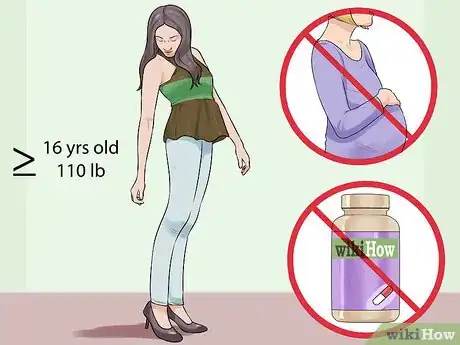
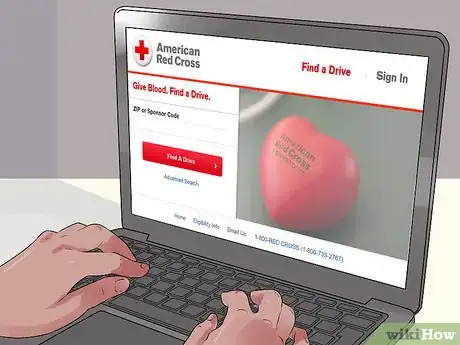


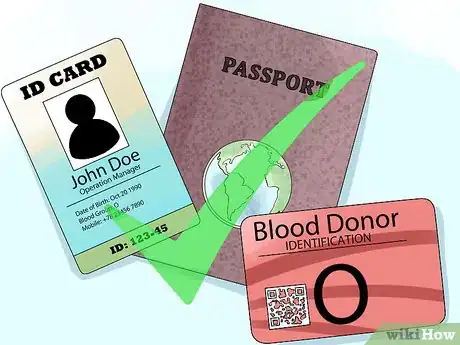



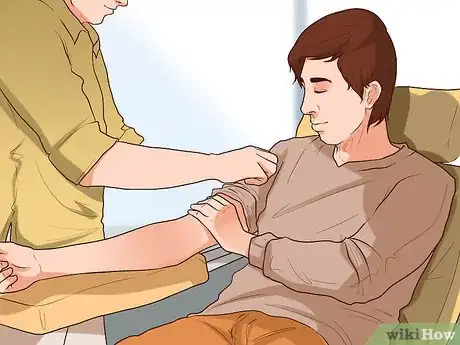


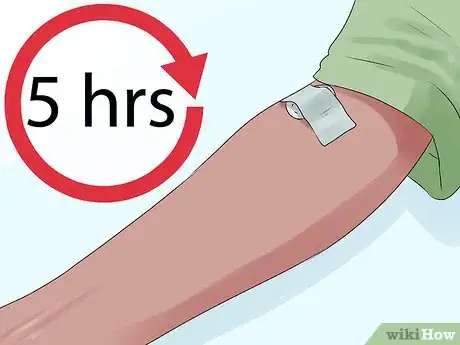
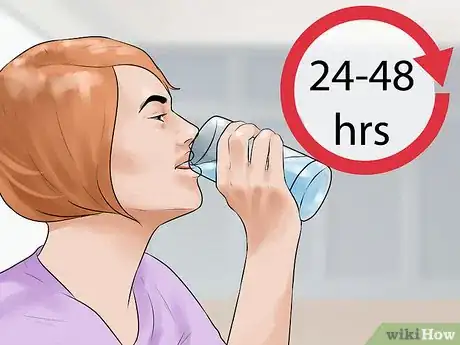






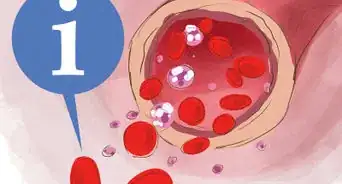
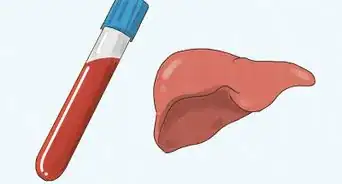

-Step-14-Version-2.webp)




